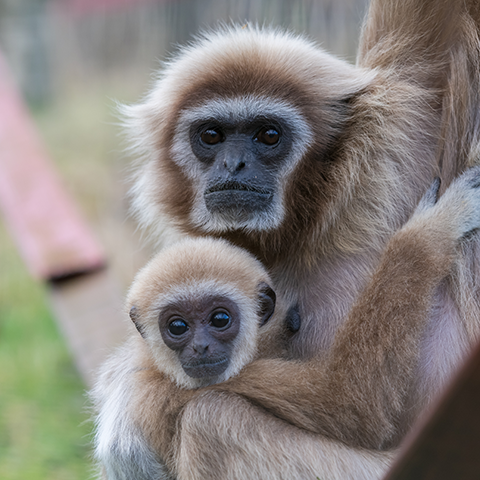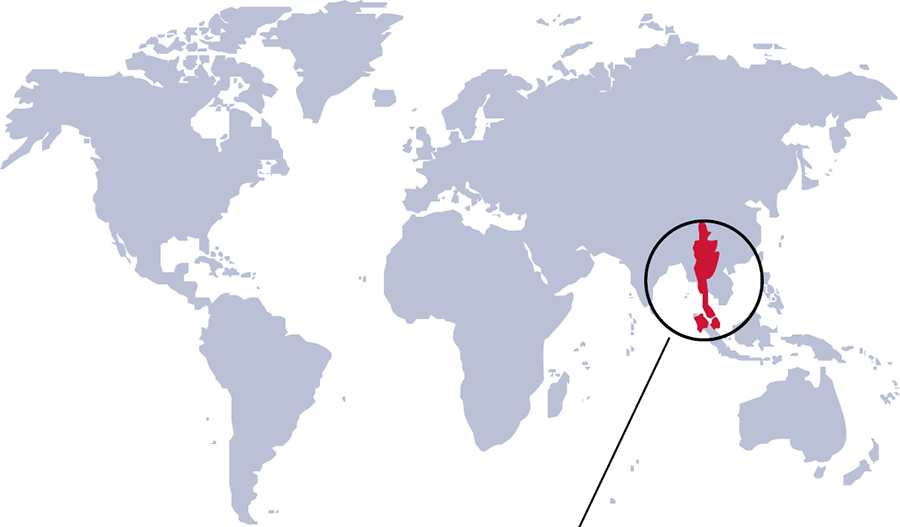
Lar Gibbon
Northern Indonesia, Malaysia, Myanmar and Thailand.

Habitat
These gibbons prefer mixed evergreen-deciduous forests but usually below 1200 metres. Their habitat has been fragmented by farming and deforestation.
Our Gibbons
We received our first pair of gibbons in August 2017. These gibbons were the brother and sister Shany and Malakou. In 2019, Shany left for a new home and partner, and Lilly joined Malakou. Malakou and Lilly had a youngster in 2020.
In 2022, due to a number of reasons, Shany and her partner Raff were looking for a new home, and in March 2022, Shany returned to Camperdown. Billy was born in April 2023.
factfile
- Their major threat is being hunted.
- They move swiftly through the trees (up to 35mph) by swinging and leaping.
- Four fingers on each hand form a hook to give a solid grip on branches.
Lar gibbons are lesser apes and can vary in colour for both males and females. These apes eat mainly fruit, leaves, flowers and insects. They mature at around 10 years old and can live to be over 40. Gibbons ‘sing’ together to confirm their bond with each other and to determine their home range.

